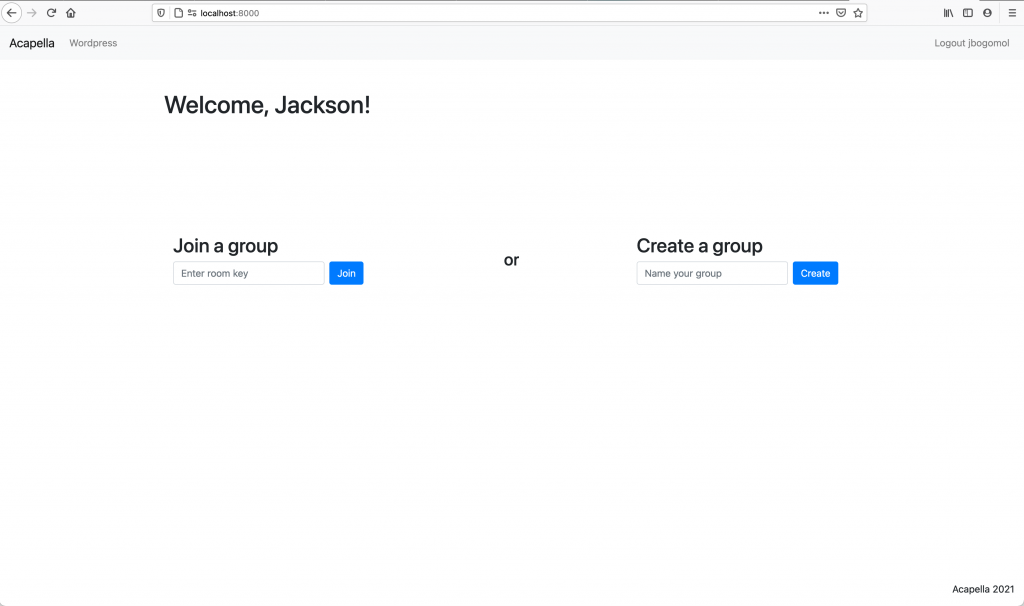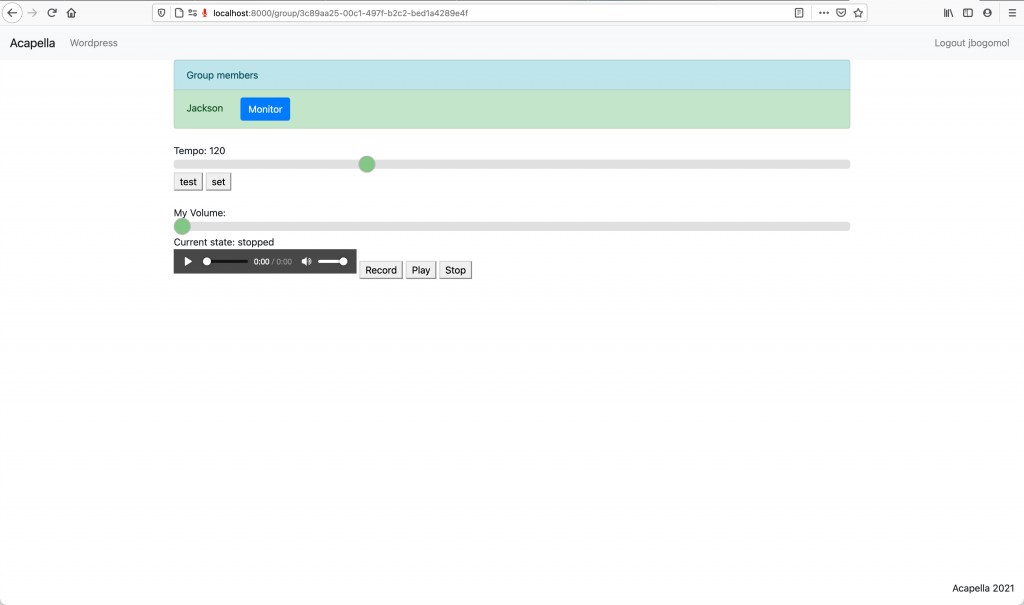I worked a lot on many different parts of the project in the past two weeks, and since there was no status report due last week, I’ll write about both weeks. Forgive me, it’s a long one!
Last week, I worked a lot on the server code, setting up Django models for groups, tracks, and recordings. A logged-in user can create a group and add other users to the group, so all group members can edit/record with their group. In each group, members will be able to add audio tracks, which can consist of multiple recordings. To help with group creation, I made a simple homepage:

The forms check for the validity of the user’s inputs and displays error messages if necessary. For example, if you don’t enter a group name, you get this message at the top of the screen:

After you create a group, the server creates a group model for you, and sends you to the corresponding group page that I made:

It looks a little rough right now, but it’s mainly for testing features at the moment. Eventually, this will contain the DAW interface we had in our design review. But this screen is enough to explain what I’ve been working on this week:
At the top, the online users are displayed, along with a “Monitor” button. When you click this button, this will allow you to hear the other users in real-time. Though that hasn’t been fully implemented yet, I think I got it most of the way there. So here’s what actually happens right now:
- Before the button is even clicked, as soon as the page is loaded, a websocket connection is opened with the Django (ASGI) server. Simultaneously, your browser creates an SDP (session description protocol) “offer” to connect with other users, which contains all of your computer’s public-facing IP address/port combinations (aka ICE candidates) that other computers can use to connect to you. This is needed so that peer-to-peer connections can be established, since your private IP address/port cannot be connected to as is (for security reasons).
- When the button is clicked, your SDP offer from step 1. gets sent to the server over the websocket connection, and the server echoes this offer to every other online user in the group, via their own websocket connections.
- When you receive an SDP offer from another user via your websocket connection, your browser generates an SDP “answer,” which is very similar to the SDP offer from step 1. The answer is then sent automatically back to the server via your websocket connection, and then forwarded to the user who sent you the offer via their websocket connection.
- When you receive an SDP answer back from a user you’ve requested to connect with, a peer-to-peer connection is finally established! I chose the WebRTC protocol, which is essentially a very low latency way to send data using UDP, intended for media streaming.
Right now, handshaking works perfectly, connections can be established successfully between 2 users, and you can send string messages from one browser to the other. To ensure that it works, I connected two different browsers (using the monitor button) and then shut down the server completely. Even after the server gets shut down, the browsers can still send messages back and forth over the WebRTC data channel! All that remains on the monitoring front is sending an audio stream rather than text messages, and connecting more than 2 users at once. These two things are the deliverables I plan to have completed by next week’s status report.
This probably goes without saying, but I didn’t have any idea how websockets, handshaking, or peer-to-peer connections worked 2 weeks ago. I’ve learned quite a lot from many online tutorials, I’ve made a number of practice Django apps, and I’ve been working well over 12 hours/week, probably closer to 24. In spite of this though, I am a little bit behind, because I didn’t know just how complicated sending audio over a peer-to-peer connection would be. To catch up, I’ll continue working a lot on this, since it’s probably the main functionality of our capstone project and has to get done. The recording aspect will have to either be pushed back, or I will need help from my other group members. Though I’m a bit more familiar with how that works, and I don’t think it’s quite as difficult as the monitoring aspect.
2 Replies to “Jackson’s Status Report for 3/27”